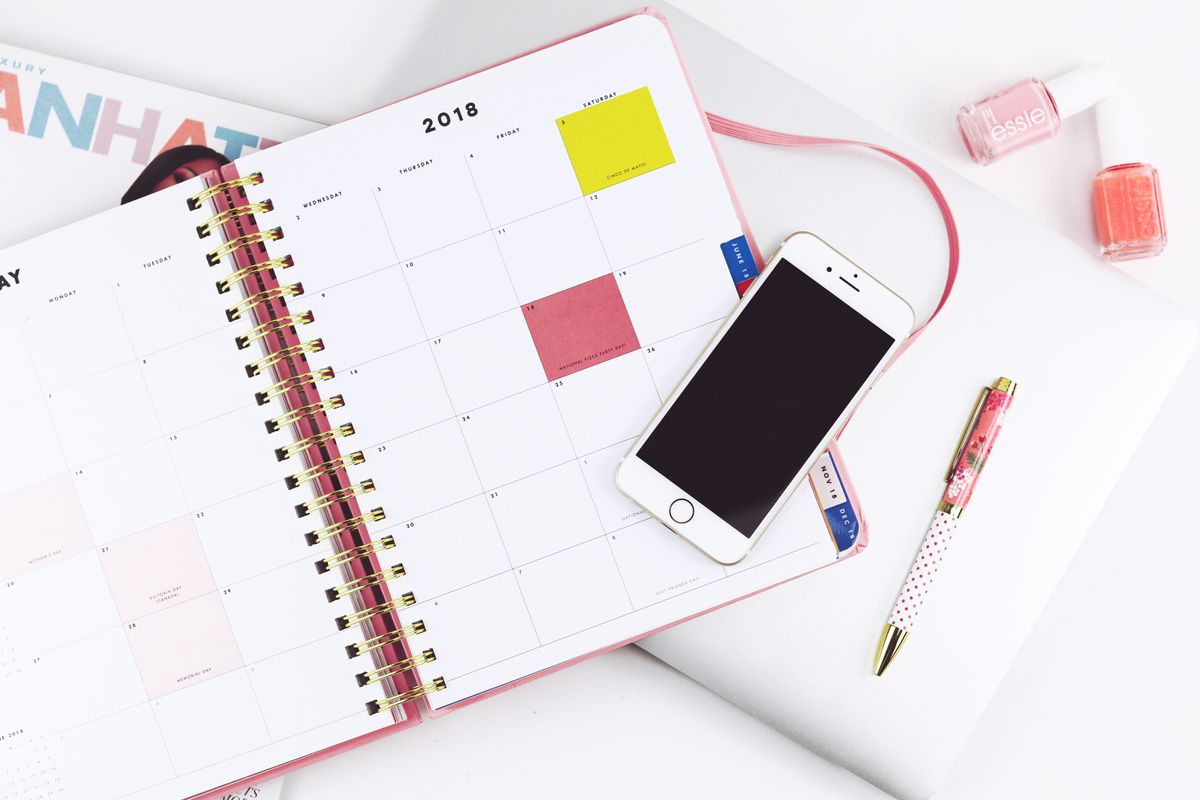Welcome to this blog on how to create and stick to a daily routine as a teenager in 2022!
A while ago, I wrote my first blog on Teen Financial Freedom on the daily routines of successful people. If you haven’t read it yet, I highly recommend you read it now before you move on to this blog. There are tons and tons of good habits in the world, from waking up early and working out to bullet journaling and keeping a journal. However, you can’t just adopt all the good habits and stuff them into one day, especially because some habits are just not for us. For example, I don’t keep a bullet journal or a diary because 1. I have bad handwriting so it won’t be as neat and organized, and 2. I don’t feel the need to write down how my day went in a journal every day.
So, how do you create a daily routine that works for you and will make you follow it consistently? What does a daily routine consist of and how do you make it perfect for you? This blog will answer all your questions regarding this, so keep reading below to find out!
Most people don’t want to follow a routine because they feel like they have to live life by other people’s rules, but that’s not entirely true – It’s your rules! You get to choose what habits to implement, you get to choose what goes in your routine and when! Establishing a daily routine is a self-investment and a way for you to be your best self. It helps to give your life structure, build forward-moving habits, and create momentum to keep moving despite the hardships. Along with this, it can help limit procrastination, keep track of your goals, and make you healthier, both mentally and physically.
We are what we repeatedly do. Excellence, then, is not an act, but a habit.
Artisole
Below, this blog first goes over how to create a routine, including examples, steps, and how to choose what to include. Secondly, once you figured out what routine you want, it’s important to also understand how to stick to it and follow it on a consistent basis. Personally, it’s definitely harder for me to stick to a routine than create it, so that’s why I thought I should include these two topics in the same blog. So, without further ado, here is how to create and stick to a routine:
Creating a Routine

Steps:
1. Make a list & identify priorities
In order to start creating a routine, you have to first know what your routine will consist of, both personally and professionally. Make a list, and don’t worry about organizing it, as this is just a brain dump of what you want to and what you should get done in a day. Even a small task counts as a task, like making the bed or preparing breakfast.
Once you have your master list, go through it and highlight your top priorities. Consider using different colors to organize it by wants and needs, personal, and work. For example, use yellow for your top priorities that you care about, blue for school, orange for work, and another for anything extra.
2. Structure your day
Early birds get things done most effectively before lunchtime, while night owls tend to get their creative burst of energy in the evenings. Think about when you work best, and group your tasks into the time of day that makes the most sense for when you will best complete them.
Mornings: Mornings are often about getting out the door, which can be its challenge. Group all your early tasks here, like feeding and walking pets, unloading the first load of dishes for the day, and putting dinner in the slow cooker. Once the morning rush is over, reserve the mornings for the tasks that require the most critical thinking and troubleshooting. There’s a common saying, “Eat the frog,” which refers to getting the task that you want to do least done first thing in the day, so it’s not looming over you.
Midday: This is a tricky time of day because your energy levels—and perhaps the caffeine from your morning coffee—have likely dissipated. However, this means you might be primed to do the boring, routine stuff that doesn’t take a lot of brainpower. Use this time for tasks like answering emails, setting appointments, and running errands. If you are based at home during the day, use this time for routine cleaning, like emptying the dishwasher and scrubbing the bathrooms.
Evening: Evenings work best when they’re set aside for planning and preparation for the next day. Layout your clothes, pack lunches, and declutter the rooms where items tend to pile up, like the kitchen. If you follow the weekly organizing routine, you’ll be picking up one room a day for 15 to 20 minutes.
https://www.thespruce.com/how-to-create-a-daily-routine-2648007
3. Cluster, optimize & order your tasks
- It helps to cluster your tasks into groups so that you don’t have tasks lying around unorganized. For example, if you have to do math homework and study for a test, consider doing one right after the order (with breaks, of course.) This will help make your routine more efficient and help you with time management.
- Once you have done that, you should review your schedule and see if you can simplify or optimize any tasks to save time. For example, if you want to work out on the same day you have to study for a test, maybe work out the next day or go for a quick run so you have more time to study.
- Lastly, once you have clustered and optimized your tasks, it’s time to order them. Decide which tasks you want to do in the morning, afternoon, or evening. It’s important to not schedule your tasks by an hourly plan because if one task takes longer than expected, you will still be able to maintain and follow your schedule.
4. Be specific but flexible
Being specific with your schedule helps you stay on track and know exactly what to do. For example, in the morning, instead of saying “get ready,” list the tasks you have to do that are part of getting ready. This could be brushing your teeth, taking a shower, and eating breakfast.
While you should be specific, you should be flexible. There will be times when events get in the way of your schedule, and when this happens, you should be able to keep going smoothly, despite the hiccups in the way.
5. Practice & test it out!
Test drive your schedule for at least 2 weeks and see how it goes. How does it feel? Did you schedule your tasks at activities at times that make sense? If there is anything that needs to be tweaked or adjusted, go ahead and change it. “It might take a few weeks for you to establish a routine that meets your needs, both personal and professional, so be patient.” (indeed.com)
Example:
Morning (the time you wake up – 11 a.m.)
- Make the bed
- Work out
- Eat breakfast
- Make a to-do list
- Answer emails
Midday (11 – 1)
- Attend classes
- Finish up assignments
- Eat lunch
Afternoon (1 – 5)
- Take a walk
- Work on a project
- Talk to a friend
Evening (5 – 8)
- Eat dinner
- Journal
- Read a book
- Wind down & relax
Sticking to the Routine

Tips/Tricks:
1. Start slow & focus on one habit at a time
When you start doing everything at once in the beginning, you’re only going to demotivate yourself and go downhill from there. It’s helpful to start with 1 or 2 of your top priorities, then move on to 3-5, and lastly, all of what you want to include.
Along with this, during your daily routine, focus on one habit at a time. This way, it’s much easier to stick to a regular routine. If you’re at the gym, be present and put your attention to where you are working. If you’re writing an essay, stay focused and concentrate. Don’t try to multitask, as it only makes you less efficient and productive.
2. Be consistent
Consistency is key when it comes to sticking to a daily routine and more. When you stay consistent, you get used to the schedule of your day and once you keep practicing, it’ll soon be your lifestyle! It may be hard at first, but if you keep going no matter what, you’ll get to where you want to be.
Check out my blog for tips on how to stay consistent as a teenager!
3. Cultivate self-awareness & identify the root cause of not sticking to a new habit
In order to stick to a routine, you must be aware of exactly what you are doing and how it is helping you. Each week, take the time to self-reflect and become aware of how your productivity and thoughts changed as you follow your daily routine.
If you ever realize that you’re having trouble sticking to a new routine, cultivate that same self-awareness and realize why you are not able to stick to it. Is it a specific habit that you need help with or the time of day that you are not able to focus on your schedule? Recognize the root cause of why you can’t achieve something and make changes so you can be the best version of yourself.
4. Make it fun
As teenagers, doing fun things add much excitement and happiness to our lives. So, why not make our daily routines fun!? Add hobbies that you enjoy doing, find a buddy for working out or studying, create a good playlist for different activities, and try new things! This will help you get into your routine and achieve your goals.
5. Track & Reward Progress
In most of my blogs, I always mention that tracking your progress is a great way to achieve your goals. When you do so, you see how far you have come, and this helps you keep going and keep hustling. Along with this, you get a sense of accomplishment that will make you proud of yourself and motivate you to keep going.
When you see how far you have come and see what you have accomplished so far, reward yourself! This will incentivize you to stay consistent and keep up the good work. If you have studied super hard for a test, take a day off after the test and do all the things you love!
The Takeaway

Having a daily routine for every minute of your life may seem rigid, but it actually does the exact opposite. When you stick to a routine, you have peace of mind, knowing that you have time for all your priorities, commitments, and fun in life. It gives you the freedom to relax when you need a break and the productivity to work when you are busy. Time is a non-renewable resource, and as teenagers, we tend to waste it on things that don’t matter to us. That’s why it’s a good idea to have a routine where you can organize your day, be productive, and do the things you love! It’s not just about creating a routine, as if you don’t stick to it, it means nothing. So, as a recap, here is how to create and stick to a daily routine:
Creating a routine:
- Make a list & identify priorities
- Structure your day
- Cluster, optimize, & order your tasks
- Be specific but flexible
- Practice & test it out
Sticking to it:
- Start slow & focus on one habit at a time
- Be consistent
- Cultivate self-awareness & identify the root cause of not sticking to a new habit
- Make it fun
- Track & reward progress
I highly recommend checking out the book “Daily Rituals: How Artists Work” to get a better sense of how you can create and stick to a daily routine. Along with this, be sure to watch this TED talk on Routines: The Unexpected Power of Habits, Practices, and Rituals.
Good luck and have fun creating and sticking to a daily routine! Type in the comments below if you are having trouble starting or if you want to share how your daily routine is going for you. Remember, it’s always ok to mess up in the beginning. The process is full of experimentation, optimization and change. It may not be easy, but it will always be worth it!
